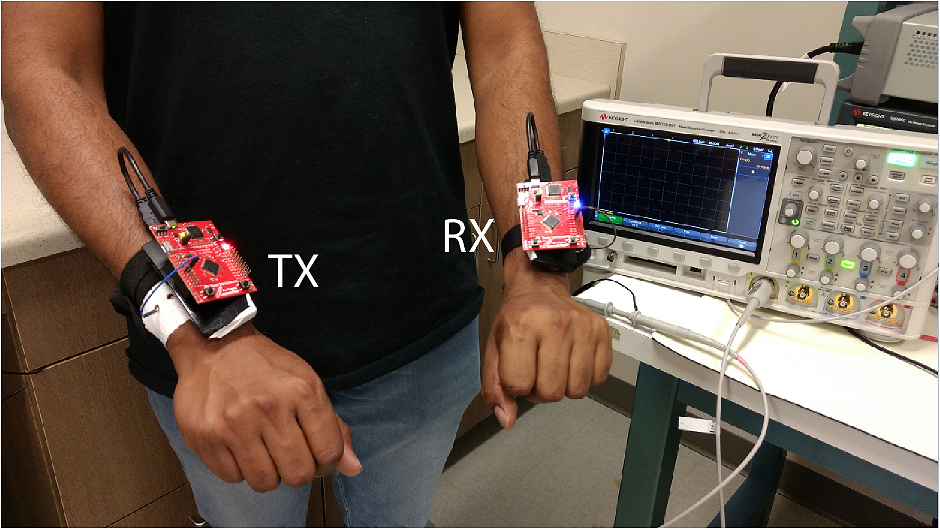Human body channels communication in networked electronics
Researchers in the US have discovered a new way to use the human body as a communication medium for networking electronic devices in and on the body.

The advance from a team at Purdue University is claimed to be more secure and energy-efficient compared to wireless systems.
Shreyas Sen, an assistant professor in the Purdue School of Electrical and Computer Engineering, said this allows devices to communicate through the body instead of sending a signal through the airwaves that could be hacked. The technology has several pending patent applications through the Purdue Office of Technology Commercialisation.
“We can achieve secure connectivity within devices in or on the body and even among devices on different humans and machines, at orders of magnitude lower-energy than wireless,” Sen said. “The applications are fascinating.”
Among the possible uses for the human body as a communication network are implanted medical devices, wearable devices, secure payment technology, and authentication applications.
The technology could, for example, enable a Doctor to reprogram a patient’s pacemaker or other implantable device without making an incision. The US Food and Drug Administration has recalled nearly a half million pacemakers because of concerns that hackers could gain access to the pacemakers through security loopholes. Using the body as the means to set the pacemakers could prevent such concerns.
Register now to continue reading
Thanks for visiting The Engineer. You’ve now reached your monthly limit of news stories. Register for free to unlock unlimited access to all of our news coverage, as well as premium content including opinion, in-depth features and special reports.
Benefits of registering
-
In-depth insights and coverage of key emerging trends
-
Unrestricted access to special reports throughout the year
-
Daily technology news delivered straight to your inbox










National Gas receives funding to develop Gravitricity underground hydrogen storage system
One single rock salt mine - Winsford - has 23 <i>MILLION </i>cubic metres of void and even allowing for 10% of that void set aside for hazardous waste...